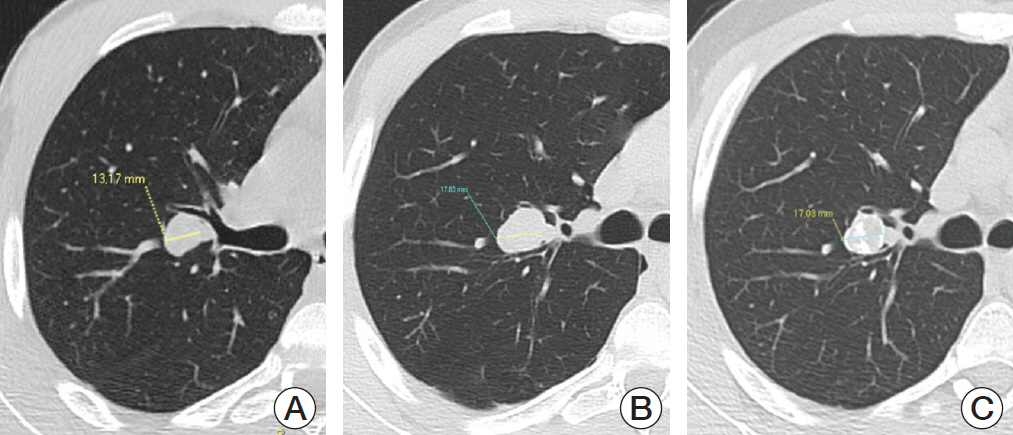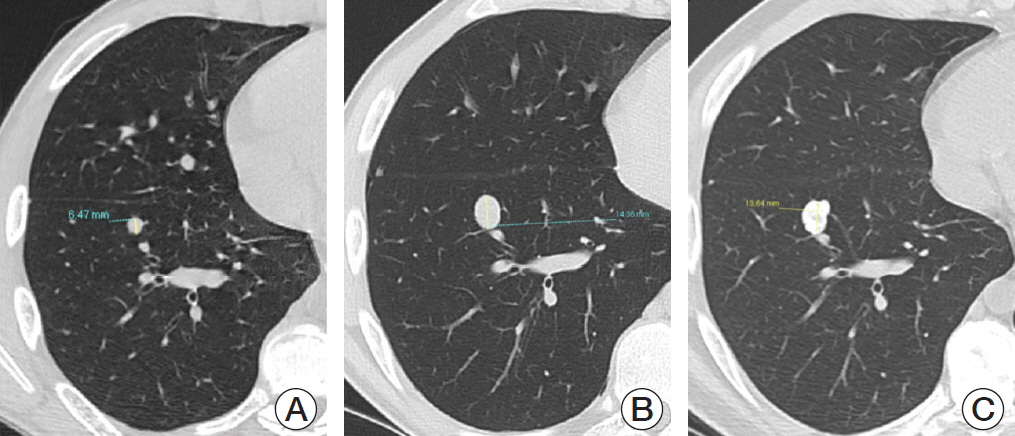Cancer Res Treat.
2021 Jan;53(1):279-282. 10.4143/crt.2020.384.
Chondroblastoma’s Lung Metastases Treated with Denosumab in Pediatric Patient
- Affiliations
-
- 1Orthopedic Division, IRCCS, Istituto Ortopedico Rizzoli, Bologna, Italy
- 2Department of Pathology, IRCCS, Istituto Ortopedico Rizzoli, Bologna, Italy
- 3Chemotherapy Division, IRCCS, Istituto Ortopedico Rizzoli, Bologna, Italy
- 4Department of Radiology, IRCCS, Istituto Ortopedico Rizzoli, Bologna, Italy
- 5General Surgery Division, IRCCS, Istituto Ortopedico Rizzoli, Bologna, Italy
- KMID: 2510670
- DOI: http://doi.org/10.4143/crt.2020.384
Abstract
- Chondroblastoma is a rare benign chondrogenic tumor that occurs in skeletally immature patients between ages 10 and 20 years old. In literature are reported few cases of lung metastases, mainly occurred after surgery or local recurrences. There is no evidence on the pathogenesis of lung metastasis, as well as pulmonary disease course. Few treatments for metastases with aggressive behavior were based on chemotherapy regimen employed in other sarcoma with no results or not satisfying ones. Denosumab is approved for treatment of giant cell tumors and it is under investigation for other giant cell-rich bone tumors. Here, we report a case of a 16-year-old male chondroblastoma of the left humerus with bilateral lung metastases at presentation and progressing during follow-up, treated with denosumab for almost 2 years. We confirm that denosumab treatment can be effective in controlling chondroblastoma metastasis and it has been a safe procedure in an adolescent patient.
Keyword
Figure
Cited by 1 articles
-
Huge Chondroblastoma of the Talus: A Case Report
Sung Hyun Yoon, Hyun-woo Park
J Korean Foot Ankle Soc. 2023;27(4):154-157. doi: 10.14193/jkfas.2023.27.4.154.
Reference
-
References
1. Dahlin DC, Ivins JC. Benign chondroblastoma: a study of 125 cases. Cancer. 1972; 30:401–13.2. John I, Inwards CY, Wenger DE, Williams DD, Fritchie KJ. Chondroblastomas presenting in adulthood: a study of 39 patients with emphasis on histological features and skeletal distribution. Histopathology. 2020; 76:308–17.
Article3. Rehkamper J, Steinestel K, Jeiler B, Elges S, Hekeler E, Huss S, et al. Diagnostic tools in the differential diagnosis of giant cell-rich lesions of bone at biopsy. Oncotarget. 2018; 9:30106–14.
Article4. Righi A, Mancini I, Gambarotti M, Picci P, Gamberi G, Marraccini C, et al. Histone 3.3 mutations in giant cell tumor and giant cell-rich sarcomas of bone. Hum Pathol. 2017; 68:128–35.
Article5. Chen W, DiFrancesco LM. Chondroblastoma: an update. Arch Pathol Lab Med. 2017; 141:867–71.
Article6. Ostrowski ML, Johnson ME, Truong LD, Hicks MJ, Smith FE, Spjut HJ. Malignant chondroblastoma presenting as a recurrent pelvic tumor with DNA aneuploidy and p53 mutation as supportive evidence of malignancy. Skeletal Radiol. 1999; 28:644–50.7. Kunze E, Graewe T, Peitsch E. Histology and biology of metastatic chondroblastoma: report of a case with a review of the literature. Pathol Res Pract. 1987; 182:113–23.8. Ozkoc G, Gonlusen G, Ozalay M, Kayaselcuk F, Pourbagher A, Tandogan RN. Giant chondroblastoma of the scapula with pulmonary metastases. Skeletal Radiol. 2006; 35:42–8.
Article9. Kyriakos M, Land VJ, Penning HL, Parker SG. Metastatic chondroblastoma: report of a fatal case with a review of the literature on atypical, aggressive, and malignant chondroblastoma. Cancer. 1985; 55:1770–89.
Article10. Chawla S, Blay JY, Rutkowski P, Le Cesne A, Reichardt P, Gelderblom H, et al. Denosumab in patients with giant-cell tumour of bone: a multicentre, open-label, phase 2 study. Lancet Oncol. 2019; 20:1719–29.
Article11. Raux S, Bouhamama A, Gaspar N, Brugieres L, Entz-Werle N, Mallet C, et al. Denosumab for treating aneurysmal bone cysts in children. Orthop Traumatol Surg Res. 2019; 105:1181–5.
Article12. Upfill-Brown A, Bukata S, Bernthal NM, Felsenfeld AL, Nelson SD, Singh A, et al. Use of denosumab in children with osteoclast bone dysplasias: report of three cases. JBMR Plus. 2019; 3:e10210.
Article13. Elek EM, Grimer RJ, Mangham DC, Davies AM, Carter SR, Tillman RM. Malignant chondroblastoma of the os calcis. Sarcoma. 1998; 2:45–8.
Article14. Calvert N, Wood D. Use of denosumab in recurrent chondroblastoma of the squamous temporal bone: a case report. Clin Case Rep. 2017; 5:411–3.
Article15. Huang TH, Liu HC, Hou JY, Chang CY, Sun FJ, Yeh TC. Efficacy and safety of denosumab therapy for low bone mineral density in childhood cancer survivors: a report of preliminary experience. Pediatr Blood Cancer. 2019; 66:e27927.
Article
- Full Text Links
- Actions
-
Cited
- CITED
-
- Close
- Share
- Similar articles
-
- A Case of Spine Origin Chondroblastoma Metastasis to Lung
- Chondroblastoma of the patella: a case report
- Metastasizing Atypical Chondroid Lesion: A Case Report
- A Case of Thoracic Vertebral Chondroblastoma, Treated with 3-D Image Guided Resection and Reconstruction
- Denosumab for the treatment of osteoporosis




